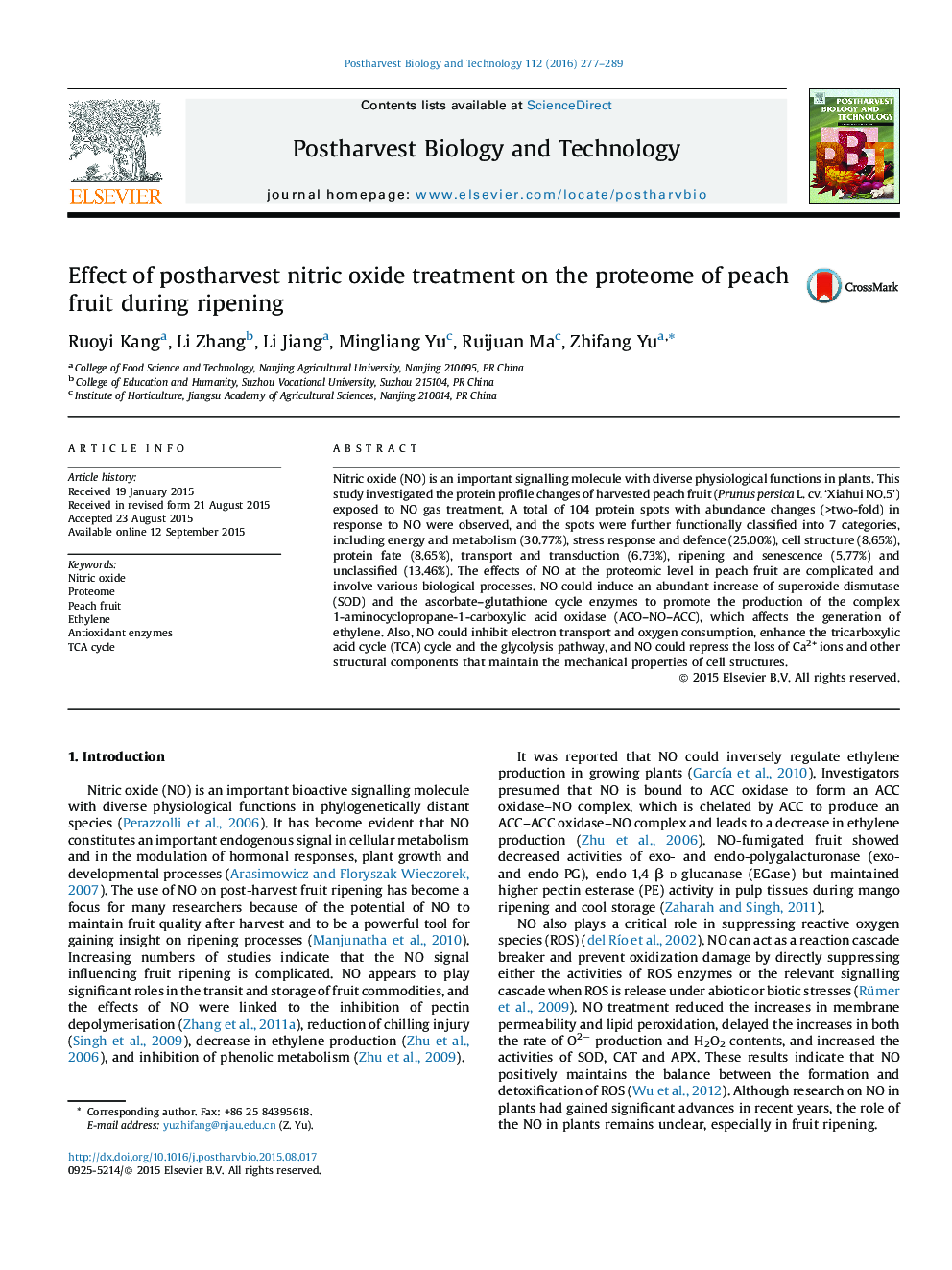| Article ID | Journal | Published Year | Pages | File Type |
|---|---|---|---|---|
| 4517947 | Postharvest Biology and Technology | 2016 | 13 Pages |
•NO induces the amount of SOD and the ascorbate–glutathione cycle-involving enzymes.•NO could increase the abundances of ACO to promote production of complex ACO–NO–ACC.•NO decreases the amounts of enzymes in glycolysis, gluconeogenesis and TCA cycle.•NO could up-regulate the abundances of cell structure involved proteins.
Nitric oxide (NO) is an important signalling molecule with diverse physiological functions in plants. This study investigated the protein profile changes of harvested peach fruit (Prunus persica L. cv. ‘Xiahui NO.5’) exposed to NO gas treatment. A total of 104 protein spots with abundance changes (>two-fold) in response to NO were observed, and the spots were further functionally classified into 7 categories, including energy and metabolism (30.77%), stress response and defence (25.00%), cell structure (8.65%), protein fate (8.65%), transport and transduction (6.73%), ripening and senescence (5.77%) and unclassified (13.46%). The effects of NO at the proteomic level in peach fruit are complicated and involve various biological processes. NO could induce an abundant increase of superoxide dismutase (SOD) and the ascorbate–glutathione cycle enzymes to promote the production of the complex 1-aminocyclopropane-1-carboxylic acid oxidase (ACO–NO–ACC), which affects the generation of ethylene. Also, NO could inhibit electron transport and oxygen consumption, enhance the tricarboxylic acid cycle (TCA) cycle and the glycolysis pathway, and NO could repress the loss of Ca2+ ions and other structural components that maintain the mechanical properties of cell structures.
Graphical abstractFigure optionsDownload full-size imageDownload as PowerPoint slide
